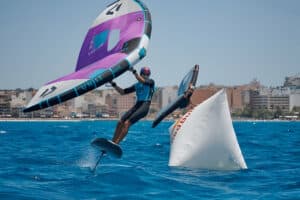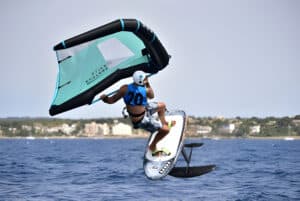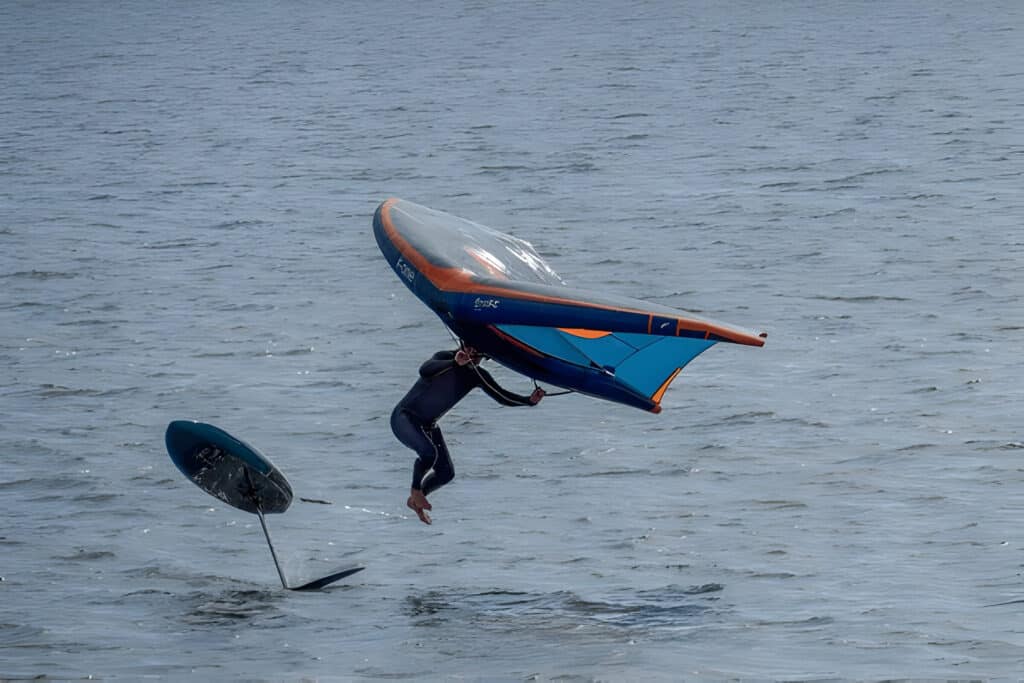
The Origins of Wing Foiling
The history of wing foiling can be traced back to the early 1980s, with the pioneering work of Jim Drake and Uli Stanciu. In 1981, these visionaries patented a wing design that laid the foundation for the modern handheld wing concept. Drake, one of the inventors of windsurfing, and Stanciu, a European windsurfing pioneer, recognized the potential of a detached sail that could be held by hand.
Their patented design featured a rigid structure that allowed wind to be harnessed without the need for a mast attached to a board. This innovative approach to water sports opened up new possibilities for riders, especially in light wind conditions. The wing concept introduced by Drake and Stanciu was a significant departure from traditional windsurfing equipment, offering greater maneuverability and versatility on the water.
In 1986, another milestone in the origins of wing foiling was reached with Tom Magruder’s introduction of the “Wind Weapon.” This handheld wing design further refined the concept, incorporating inflatable technology to create a more portable and user-friendly device. Magruder’s Wind Weapon demonstrated the potential for inflatable wings in water sports, setting the stage for future developments in wing foiling.
The Wind Weapon utilized a semi-rigid frame with an inflatable leading edge, allowing for easier transport and storage compared to fully rigid structures. This innovation addressed one of the key challenges faced by water sports enthusiasts: the need for compact equipment that could be easily transported to different bodies of water.
While these early developments laid the groundwork for modern wing foiling, it would take several more decades before the sport truly took off. The evolution of wing designs, advancements in materials, and the incorporation of foil technology would eventually converge to create the exhilarating water sport we know today as wing foiling.
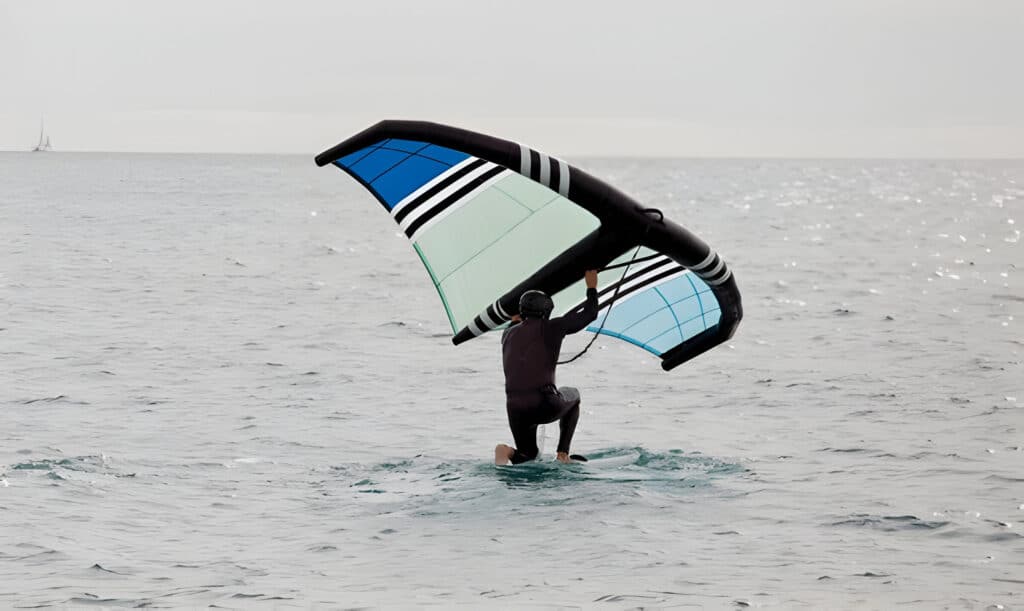
The Hydrofoil Revolution
The early 2000s marked a significant turning point in water sports with the rise of hydrofoils in kitesurfing, windsurfing, and stand-up paddleboarding (SUP). This explosion of hydrofoils revolutionized these disciplines, offering riders unprecedented speed, efficiency, and the ability to glide above the water surface.
In 2011, Tony Logosz, a pioneer in water sports equipment design, developed the “Slingwing” prototypes, which combined handheld wings with hydrofoils. These early inflatable wing prototypes laid the groundwork for what would eventually become modern wing foiling. Logosz’s innovative approach to water sports demonstrated the potential of merging inflatable wing technology with hydrofoil surfing.
The development of wing foiling took a significant leap forward in 2018 when Flash Austin successfully attempted wing foiling in Maui, Hawaii. Austin’s experiments involved using rigid spar wings on a SUP foil board, effectively demonstrating the viability of the wing foiling concept. This breakthrough caught the attention of water sports enthusiasts and equipment manufacturers alike, sparking further interest in the discipline.
The use of rigid spar wings on SUP foil boards marked a crucial step in the evolution of wing designs. These early setups allowed riders to harness the wind’s power while benefiting from the efficiency and lift provided by the hydrofoil. The combination of a handheld wing and a foil board proved to be a game-changer for wing foiling, offering a unique blend of wind and water sports.
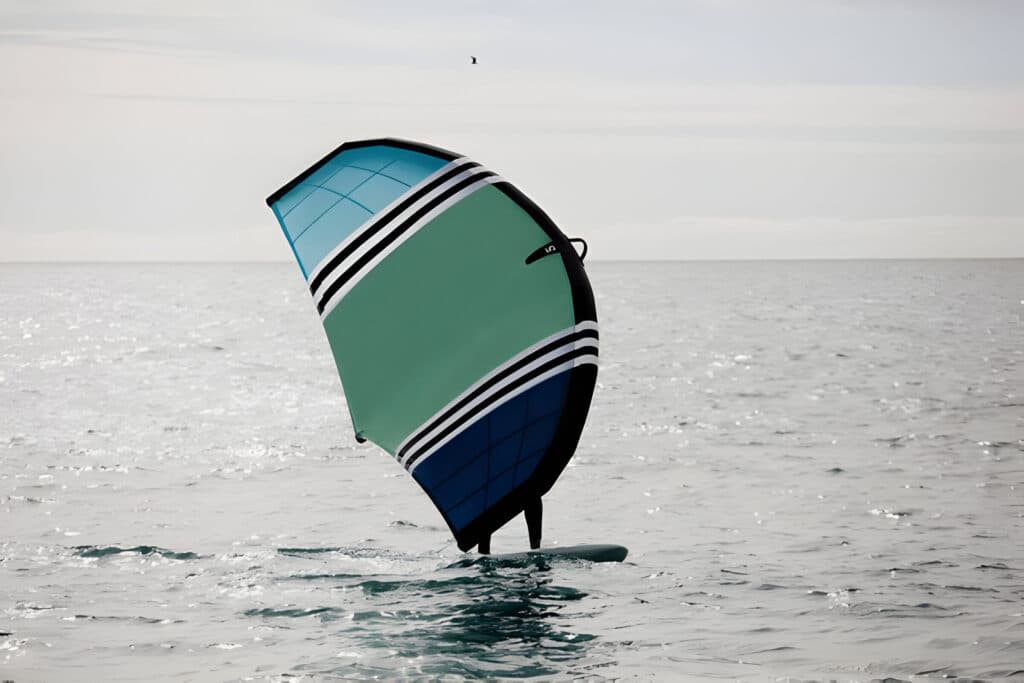
The Birth of Modern Wing Foiling
The birth of modern wing foiling can be traced back to the spring of 2019 when Duotone, a major brand in water sports equipment, collaborated with Ken Winner to release the first commercially available inflatable wing. This groundbreaking product marked a significant milestone in the history of wing foiling, combining the principles of windsurfing and kitesurfing with the latest advancements in inflatable technology.
The inflatable wing design offered several advantages over previous rigid structures. It was lightweight, portable, and easy to set up, making it accessible to a wider range of water sports enthusiasts. The inflatable construction also provided enhanced safety features, as it could absorb impacts and was less likely to cause injury in case of accidents.
In April 2019, professional waterman Kai Lenny released a viral video titled “This is Wing Surfing,” which showcased the potential of this new sport. Lenny’s video demonstrated the versatility of wing foiling, highlighting its ability to perform in various wind conditions and on different types of water bodies. This exposure played a crucial role in sparking interest among water sports enthusiasts and accelerating the growth of wing foiling.
The period between 2019 and 2020 saw rapid growth in popularity and equipment development for wing foiling. Major brands and equipment manufacturers quickly recognized the potential of this new discipline and began investing in research and development. This led to a proliferation of wing models and foil board designs, each catering to different skill levels and riding styles.
During this time, improvements in wing design focused on enhancing performance and ease of use. Manufacturers experimented with different aspect ratios, canopy shapes, and boom configurations to optimize lift, stability, and maneuverability. The evolution of wing designs also saw the introduction of hybrid wings, combining inflatable and rigid elements to achieve specific performance characteristics.
Simultaneously, advancements in foil technology contributed to the development of wing foiling. The incorporation of hydrofoils to boards allowed riders to achieve higher speeds and smoother rides, even in light wind conditions. This opened up new possibilities for riding in a wider range of locations and weather conditions.
The rapid growth of wing foiling during this period was also facilitated by the sport’s accessibility. Compared to other wind-powered water sports, wing foiling required less equipment and was relatively easier to learn. This made it attractive to beginners and experienced riders alike, contributing to its widespread adoption.
By 2020, wing foiling had established itself as a distinct discipline within the world of water sports. Its inclusion in major water sports events and the establishment of dedicated competitions further solidified its position in the industry.
Sources:
- Stanciu, U., & Drake, J. (1981). U.S. Patent No. 4,497,272. Washington, DC: U.S. Patent and Trademark Office.
- Magruder, T. (1986). U.S. Patent No. 4,708,079. Washington, DC: U.S. Patent and Trademark Office.
- Pelkey, J. (2019). The History of Windsurfing. Windsurf Magazine.
- “The Evolution of Hydrofoiling in Water Sports” – International Journal of Water Sports Technology, 2019
- “Wing Foiling: A Comprehensive Guide” – Watersports Magazine, 2020
